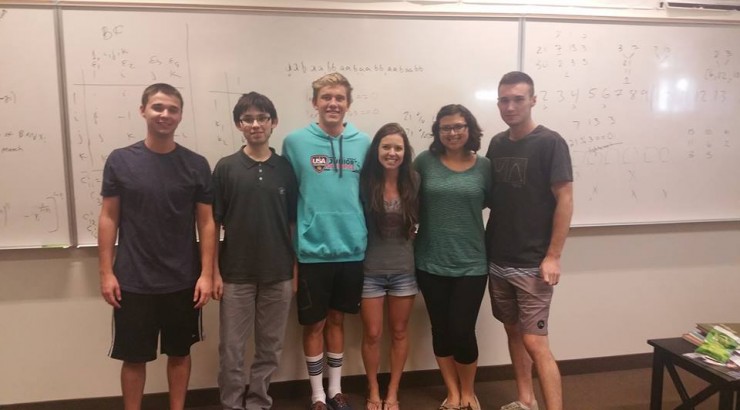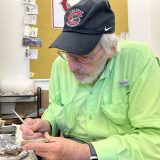
IEEEXtreme 9.0 Competition Students solve programming problems for 24 hours straight
November 4, 2015
As a sophomore at Chapman University, just embarking on my journey into the world of coding, entering a 24-hour long programming competition was the last thing I ever thought I would be doing. Nevertheless, when the opportunity came up at that first meeting of the
Association of Computing Machinery
to participate in
IEEEXtreme 9.0
, I hesitantly added my name to the list of people who agreed to represent Chapman.
I was excited about learning new skills and challenging myself but also had no idea what I was getting myself into.
Training for the Competition
Once Chapman was registered with the
Institute of Electrical and Electronics Engineers
(IEEE) and the two teams were organized, the five other students and I had about two weeks to prepare for the competition. We met as a group three times to familiarize ourselves with the types of problems we would be presented with and the platform we would be working on.
I was lost with the very first problem we looked at. I had a very vague idea of what the question was asking, and even less of an idea about how to solve it. Thankfully, with a lot of help from Chapman alumnus,
Travis Hummel ’12
, and collaborating with my fellow participants, I was able to work through the problem and even learned a few tricks along the way. It took me much longer than some of the more experienced students, but just the fact that I was able to understand and solve the problem gave me a lot of hope for the actual competition itself.
This was pretty much what happened at each of our practice sessions, but in every session I got more and more into the “problem solving mindset” that you really need for the kinds of problems that the competition was going to be comprised of. As the big day approached, I felt better prepared for the challenges we would face in those 24 hours.
The Competition Begins

Chapman students in the conference room of Von Neumann Hall competing in the IEEEXtreme 9.0 24-hour Competition.
IEEEXtreme 9.0 began at 00:00 UTC, 5:00 p.m. our time on October 23, 2015. The first challenges were up, and every hour more challenges would become available to us. The fabulous thing about the competition is that we could jump back and forth between problems, had no time limit, and essentially could submit our code as many times as we wanted.
There were different difficulty levels, ranging from easy to advanced; in all honesty, I mostly stayed away from the advanced problems. Those were something entirely out of my skillset, and I wanted to focus on more manageable problems and try to get more points.
5:00 a.m. The Halfway Mark

Dr. Erik Linstead stops by in the morning to motivate students who’ve been up all night competing in IEEEXtreme 9.0.
The first few hours went by so quickly because we were so preoccupied dissecting problems and typing away, but then 5:00 a.m. hit. The hour between 5:00 a.m. and 6:00 a.m. was the longest hour. The self-imposed sleep deprivation was hitting us all, and from then on productivity went downhill. A few of us, myself included, eventually took naps but we were up and running for the most part afterwards.
The last half of the competition moved very slowly; all of the challenges were available already, so our only option was to keep revisiting different problems, trying to make our code more efficient. By the last hour, I believe we had all given what we could and proceeded to reward ourselves by taking advantage of the ping pong table in Von Neumann Hall, which also served to keep us awake just a bit longer.
Making it the Full 24 Hours
Finally, the competition ended at 4:55 p.m. on Saturday, and every one of us was struggling to stay awake- and sane, for that matter. We ended, both teams placing in the top thousand out of about 2,200 teams worldwide. Not bad for this being Chapman’s first time participating!
Overall, the IEEEXtreme competition was very new for me. I had a great, if at times overwhelming, experience because although the problems for the competition were harder than I expected, I enjoyed being able to learn something new and further develop my blossoming skills as a programmer. I met some fantastic and incredibly smart people through it, learned a lot, and had a good time.
Read more about IEEEXtreme 9.0 here.

